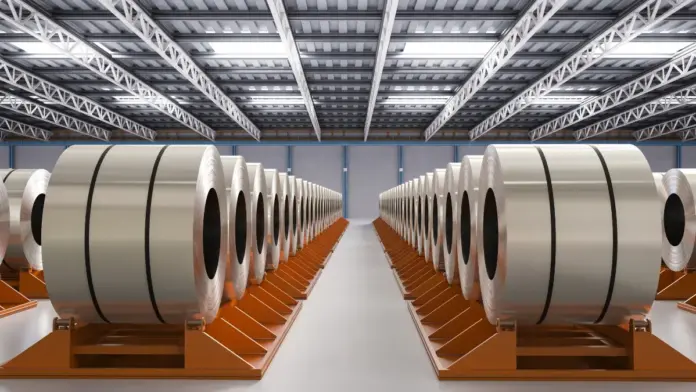Modern industrial landscapes consider stainless steel a quintessential material, primarily due to its exceptional properties: corrosion resistance, durability and aesthetic appeal. Advancements in manufacturing techniques over the years have catapulted stainless steel into an arena of diverse applications across multiple industries; from architectural marvels–testaments to both creativity and engineering precision–to intricate machinery components – the versatility of this metal continues inspiring innovation while redefining industrial standards.
Where it Began
Innovations in the manufacturing techniques of stainless steel have played a pivotal role: they’ve amplified the material’s utility and broadened its application across various industries. These advancements, not limited to optimizing production processes, have also opened up novel possibilities for engineers, architects – even designers themselves.
Customized Alloy Development
In response to the ever-evolving demands of the industrial landscape, manufacturers are proactively engaging in the creation and enhancement of tailored stainless steel alloys. By meticulously developing these specialized alloys, they can engineer materials that boast a range of desirable characteristics, such as superior strength, elevated heat tolerance, or enhanced resistance to corrosion. This deliberate customization of alloy properties is undertaken to fulfill the stringent and varied necessities found within a multitude of sectors, including but not limited to the intricate fields of aerospace and the critically demanding realm of healthcare. Through this dedicated approach, manufacturers are able to meet and exceed the specific application requirements that these diverse industries require.
Advanced Forming Processes
Revolutionizing the fabrication of stainless steel components, innovative forming processes enable us to create complex geometries with remarkable efficiency and accuracy. Hydroforming, laser cutting; deep drawing–these techniques open new avenues for designers: they allow an exploration into creative solutions without compromising structural integrity.
Nanostructuring for Enhanced Properties
Nanostructuring techniques have unlocked further enhancement potential for the mechanical and functional properties of stainless steel. Researchers manipulate the material’s microstructure at a nanoscale, achieving unprecedented levels of strength, hardness, and wear resistance. This advancement paves way towards critical industries adopting next-generation applications in stainless steel.
Cold Rolled Steel Integration
The integration of cold rolled steel techniques notably advances stainless steel manufacturing: Cold rolling imparts a superior surface finish and dimensional accuracy to stainless steel sheets–an ideal characteristic for applications requiring precision. Further, this technique enhances the material’s strength and ductility; thereby guaranteeing optimal performance in even demanding environments.
Surface Treatments for Performance Enhancement
In optimizing the performance of stainless steel components in harsh operating environments, pivotal roles are played by surface treatments. Innovations – including plasma nitriding, ion implantation and diamond-like carbon coatings – enhance wear resistance of the material; they also reduce friction and mitigate corrosion. Through this extension process: service life is prolonged thus bolstering reliability significantly.
Environmentally Sustainable Manufacturing Practices
Recently, the stainless steel sector has markedly intensified its focus on fostering environmentally sustainable manufacturing methodologies. This heightened concentration is evidenced by the adoption of energy-efficient production techniques and the initiation of robust recycling programs aimed squarely at diminishing waste and meticulously preserving natural resources. These strategic efforts illustrate the industry’s profound commitment to ingraining environmental sustainability into the very heart of their operational ethos.
Integration of Digital Technologies
Digital technologies, like computer-aided design (CAD) and simulation software, have revolutionized stainless steel component design and manufacturing through their integration. Through virtual prototyping and predictive modeling — tools that allow for the optimization of designs, minimization of material waste, and acceleration in product development cycles — engineers are able to drive innovation while enhancing efficiency.
Stainless steel manufacturing techniques continually advance, highlighting the material’s enduring relevance and adaptability in industrial applications’ perpetually evolving landscape. Stakeholders across diverse sectors–by embracing innovation, customization, and sustainability; they can harness stainless steel’s full potential to confront emerging challenges: thus unlocking unprecedented growth opportunities that propel progress forward.



